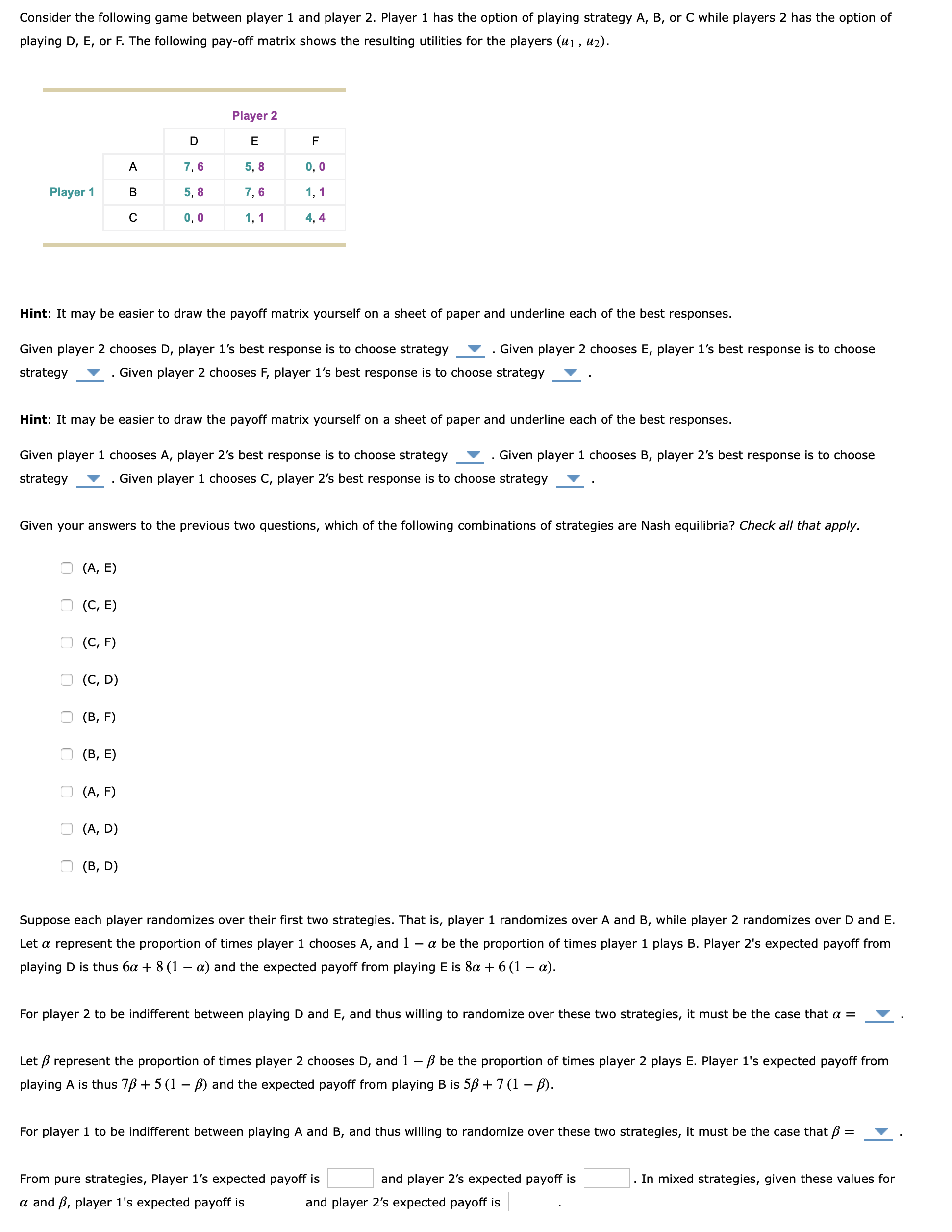please answer all
Consider the following game between player 1 and player 2. Player 1 has the option of playing strategy A, B, or C while players 2 has the option of playing D, E, or F. The following pay-off matrix shows the resulting utilities for the players (141 , 142). Player2 D E F A 7,6 5, 8 0,0 Player1 B 5, 8 7,6 1,1 C 0,0 1,1 4, 4 Hint: It may be easier to draw the payoff matrix yourself on a sheet of paper and underline each of the best responses. Given player 2 chooses D, player 1's best response is to choose strategy v . Given player 2 chooses E, player 1's best response is to choose strategy V . Given player 2 chooses F, player 1's best response is to choose strategy V . Hint: It may be easier to draw the payoff matrix yourself on a sheet of paper and underline each of the best responses. Given player 1 chooses A, player 2's best response is to choose strategy V . Given player 1 chooses B, player 2's best response is to choose strategy v . Given player 1 chooses C, player 2's best response is to choose strategy v . Given your answers to the previous two questions, which of the following combinations of strategies are Nash equilibria? Check all that apply. (A, E) (C, E) (C, F) (C, D) (B, F) (B, E) (A, F) (A, D) (B, D) Suppose each player randomizes over their rst two strategies. That is, player 1 randomizes over A and B, while player 2 randomizes over D and E. Let 0: represent the proportion of times player 1 chooses A, and 1 a be the proportion of times player 1 plays B. Player 2's expected payoff from playing D is thus 6a + 8 (1 a) and the expected payoff from playing E is 80: + 6 (1 a). For player 2 to be indifferent between playing D and E, and thus willing to randomize over these two strategies, it must be the case that a = V Let [9 represent the proportion of times player 2 chooses D, and 1 )9 be the proportion of times player 2 plays E. Player 1's expected payoff from playing A is thus 7 + 5 (1 ) and the expected payoff from playing B is 5,3 + 7 (1 ,3). For player 1 to be indifferent between playing A and B, and thus willing to randomize over these two strategies, it must be the case that [3 = v From pure strategies, Player 1's expected payoff is :l and player 2's expected payoff is :l. In mixed strategies, given these values for a and [9, player 1's expected payoff is and player 2's expected payoff is







